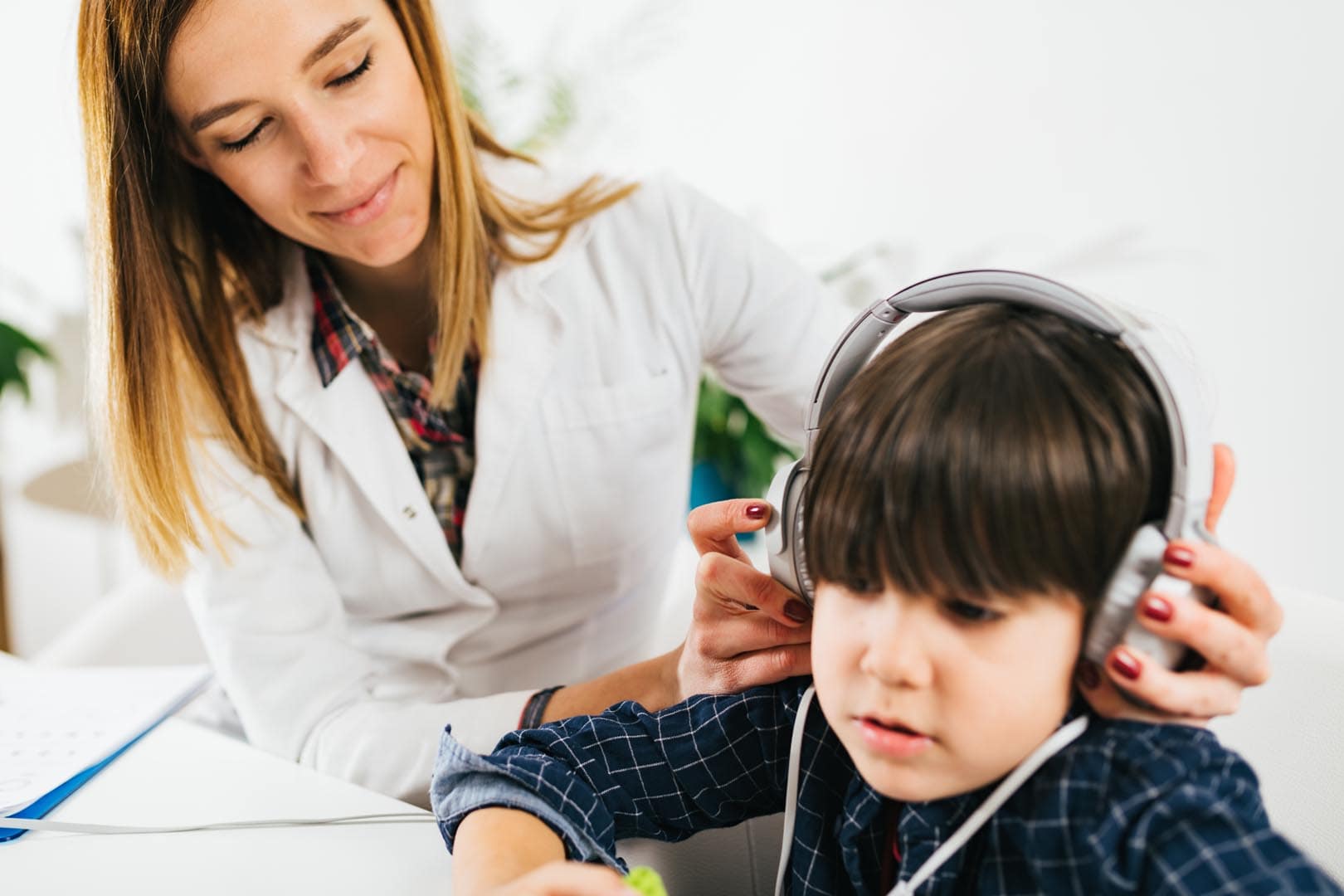Hearing Problem of Audio Disconnect in Children with Autism
An apparent hearing deficit is one of the early signs that a child with autism spectrum disorder (ASD or autism) may exhibit. A hearing test may rule out the presence of deafness and may suggest a diagnosis of autism. Hearing problems persist with the growth of children with autism and should be properly addressed through listening training programs. Autism has commonly been associated with auditory processing disorders, which are undetected by a hearing test. The common auditory processing disorders found in children with autism include:
- Hyposensitivity (i.e., not getting enough auditory information due to their “hypo” senses)
- Hypersensitivity (i.e., the ability to hear the slightest sounds)
- Delays in auditory processing (i.e., instructions have been heard and recorded without understanding until the processing of the received message is done)
- Inability to filter auditory information (i.e., inability to differentiate between foreground and background noises [gestalt perception])
- Inability to adapt to certain sounds
The hearing problems associated with autism involve the proper working of the ear with an impaired central auditory system that interprets and analyzes the auditory information. The signs that indicate the presence of the hearing problem of audio disconnect in children with autism include:
- The child may seem deaf on some occasions but hears the least audible sounds on other occasions.
- The child covers his ears to specific sounds that are not loud.
- The child is a very light sleeper (i.e., awoken by the slightest sounds).
- The child makes loud sounds by banging doors, drumming things, singing, etc.
- The child is unable to concentrate in noisy environments.
- The child has speaking problems.
The auditory modulation disorder in children with autism affects their ability to process sound and words, hypersensitivity, sequencing, a combination of visual-auditory information, and may result in impaired auditory memory.
This hearing problem can be treated through approved listening training programs like the Auditory Integration Training (AIT). The listening training technique teaches the brain to understand sounds and words. It further stimulates the language skills of children with autism and provides them with new thoughts and words for better expression. Additionally, AIT has proved helpful in improving the responsiveness to name, daily activity levels, sensory processes, social skills, and overall well-being. AIT and Filtered Sound Training both require a total of 20 sessions, with 2 sessions of 30 minutes per day for 10 days being the protocol.
Children with autism are hypersensitive to sounds, which makes them prone to severe pain in their ears. Hypersensitivity results in lack of socialization, speech disorder, and overload behavior leading to bad temper and aggressiveness. Hypersensitivity is a result of weak muscles associated with the hammer and stirrup, which makes it impossible to block unwanted noise. These weak muscles can be tuned through modified music therapies, making the unwanted noise tolerable.
Hearing problems of audio disconnect in children with autism is not curable but treatable. Certified listening training techniques conducted by an experienced speech therapist can lessen the effects of hearing problems. Early intervention at the age of 2–3 years can significantly enhance hearing capabilities, paving the way for an effective treatment for other symptoms of autism.
References:
Listen And Learn Centre – Melbourne, Australia. www.auditoryprocessing.com.au: Auditory Processing Disorder, retrieved March 23, 2011, from http://www.auditoryprocessing.com.au/1-auditory.html
Filtered Sound Training. www.filteredsoundtraining.net: Problems of Auditory Processing as a Key Feature of Autistic Spectrum Disorder (Autism)
Kids Health. Kidhealth.org About Auditory Processing Disorder http://kidshealth.org/parent/medical/ears/central_auditory.html
Copyright © by Special Learning Inc. All right reserved.
No part of this article may be reproduced in any manner whatsoever without written permission except in the case of brief quotations embodied in critical articles and reviews. For information, contact Special Learning Inc., at: contact@special-learning.com








